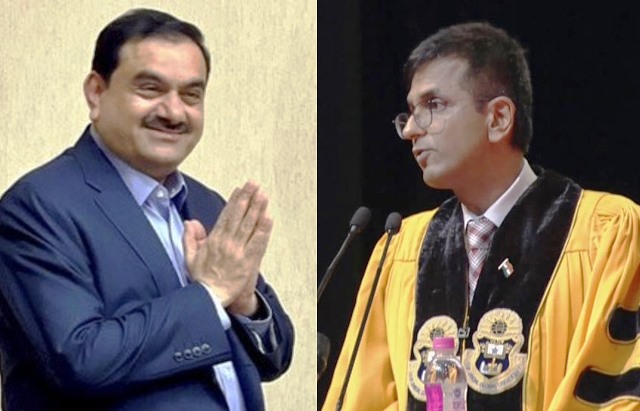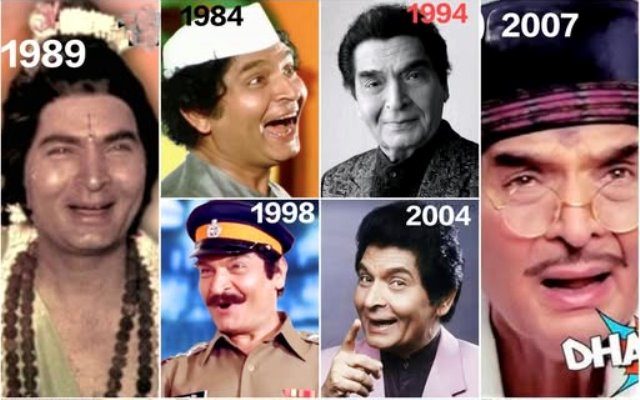
Dizzy Heights And Constitutional Selfie
India with all its tragedies also never stops to entertain. And it’s not even Bollywood. It is just everyday Government, businesses and institutions. Two prominent figures are up in the news, aiming for mythological heights but not quite making it. The third one is a bit quiet at this time. The Adani legend continues as he made to the third richest man in the world only for the balloon to burst and land somewhere on a bed of enquiries, accusations and cross-accusations. ‘It’s an attack on India,’ he said; ‘the last refuge of scoundrels,’ said Winston Churchill. We can’t say that about Adani, who after all has been one of the biggest financial muscles behind the rise of Narendra Modi.
Exactly what happened is a bit beyond me, not being a money man myself. How can some one accumulate so much virtual wealth and create a web of intriguing financial instruments and investments networks that apparently had no feet. Seems quite astonishing to me. And then the person being able to reach dizzy figures of $200 Billion without anyone noticing anything wrong.
Now I don’t know about your experience, but I find that if I put in ₹100 of money without proper receipt and where spent in my tax return, Madame Nirmala Sitharaman’s men quickly write back questioning, ‘Aare iss soh rupae kis ko diye bhai? Kaha hai GST, MST, PST, IST etc etc?’ I just made the STs. So how can a man slide crores and crores of rupees past these Sitharaman vigilantes at the revenue office without knowing? Is it possible they are so occupied with ₹100 that it is easier to scam crores past them, and comfortably know they are too busy to look at that?
It needed a western institution to gaze past the shiny balloon rising and rising on hot air to burst it and ask, ‘Where is the Khazana?’ Well on the other hand they could be jealous that another Gujarati has made to the ranks. What with Nirav Modi, Lalit Modi, Jayantilal Sandesara, Asish Jobanputra… there is certainly a pool of talent in that state.
However, we should not jump to conclusions about the patriotic Adani. After all he was going to save Punjab’s farmers by setting up alternative mandis and buy their land, until they figured out that the saviour’s help might be a one-way road going towards Adani and Co without a return track. All roads lead to Adani.
He might still be hard done by. Let us see how the drama plays out. He might not be able to escape to the capital of world fugitives, the ethical upright British capital of London because he may not have enough money to acquire refugee status.
A Constitutional Selfie
We al like selfies at times, to make us believe how good looking we look against a background of great imagery. So this week, the Chief Justice has done a selfie of the Indian Constitution. ‘The Constitution of India is a remarkable homegrown product of self-governance, dignity and independence and while some speak of it in entirely adulatory terms, many others are cynical about its success,’ said Chief Justice of India D Y Chandrachud.
Well I never! This is a most flattering selfie of the Indian Constitution against a background of a mythical tapestry of genius taken by no less than the person who represents it, the Chief Justice of India.
Since 1947, legal writer after legal writer of Indian Constitution have been saying the Indian Constitution is a ‘remarkable document’ based on the 1935 Government of India Act. The CJI may not have read the law books they wrote, perhaps not the introductions.
The 1935 Act was the last hurrah of the British to rule over Indians for another 100 if not 1,000 years. Its power structure is all tilted in favour of the governing class, who were the British at the time. It gave little credence and power to Indians to hold power to account.
But events intervened and the British had to leave and go back to their little Island. The boisterous and brave Indian ‘independence movement’ that had been inspired by Gandhi against ‘foreign rule and foreign ways’ sat solemnly after 1947 in the Constitution Assembly and began drafting the constitution of Bharat. After the homegrown word Bharat, they seem to have got stuck with what of the Vedas, the Shastras, especially the Dharma shastras they would use as a template to get rid of foreign ways and build a ‘homegrown’ constitution.
Eureka moment. Somehow they convinced themselves that the 1935 Act was home grown! After all it was inspired by some white sahibs governing in India and then final touches made in Britain. As these white sahibs were eating chicken korma, their minds must have become Indian. So technically CJI is right, it is home grown.
They spent two years finding words such as ‘President’ to replace Governor General. They extended the voting franchise from educated and loyal elite of the British to everyone who had at least a thumb or toe.
However, they retained the power that lay in the Governor General to overrule almost any legislation and introduce his own ‘emergency’ rules. The powers of detentions, the power to appoint judges and much more that the British wanted to keep away from pesky Indians, in case they sabotaged their ‘good intentions’ for the native Indians, have all been kept almost word for word. I didn’t know that Dharma shastras gave that much power to the head of State. So I have been racking my brain on what is home grown about the structure of power in Indian Constitution that is home grown and not based on the Christian idea of divine powers of sovereign Kings. The anointed King of India was of course Jawaharlal Nehru. Never in history of Indian civilisation had so much power been given to one person as sovereign as in the new Republic of India.
Then they needed to look at what the Government will do for its citizens. The Dharma shastras put these as binding duties on the King. Kautilya even said, ’If the King doesn’t fulfil them, the masses can rise against him to replace him’. But the Constituent Assembly decided to look at the Irish idea of non-binding Directive Principles and put these as ‘Directive Principles’! The only homegrown bit was copy and paste.
Then came the issue of democracy. In Bharat of the old, democracy was not ‘majoritarian’. It was almost complete consensus of those given the power to engage in decision making. The Constituent Assembly was well aware that India constituted multiple nations, with their own histories, languages and cultures. But it decided on the ‘British’ majoritarian first past the post democracy. In Britain, there is one language and one dominant culture. Bit difficult to find the homegrown in this except the tendency to be more English than the English.
Then came the matter of human rights! Human Rights have no pedigree in India. So off the wise men of the Assembly went to the United States Bill of Rights and transplanted it on the already hybrid document. It is called ‘Fundamental Rights’. But there arose a conflict. The British would not have called them ‘fundamental rights’. Fundamental Rights in US cannot be taken away. The 1935 Act gave power to the ruling power, the British, to take back any rights the average man decided to exercise against the British.
So in the Constitution, the ‘Fundamental Rights’ have a sentence at the beginning in article 13.4, ‘Nothing in this article shall apply to any amendment of this Constitution made under article 368’. What does article 368 say? ‘368.5[Power of Parliament to amend the Constitution and procedure therefor.]—6[(1) Notwithstanding anything in this Constitution, Parliament may in exercise of its constituent power amend by way of addition, variation or repeal any provision of this Constitution in accordance with the procedure laid down in this article.
It also adopted the Weimer Republic of Germany’s approach to suspending fundamental rights during an emergency! It adopted the German idea of federal structure but still handed power to the centre to suspend state legislatures. It has done that over 95 times since 1947!
So much for the home grown! The Constitution is a hybrid document from German Weimar Republic, US Bill of Rights, Irish Directive Principles, British majoritarian first past the post democracy with rule of law, and bits taken from French and German constitutions. It promotes a European-style democracy. There isn’t a single article that reflects the 5,000 years of Indian civilisation, the Shastras, the concept and accountability of power in the period of great Indian dynasties or Ram Rajya except the word ‘Bharat’.
The only other home grown bit that Indian Constitution has is that there was perhaps no White man in the Constituent Assembly. They were all home grown. Although there may have been quite a few British advisors at the back. And Mountbatten remained Governor General until June 1948 seeing this process through.
Wake up Kautilya, Guptas, Mauryas, Ashoka, CJI says your footprints are in the Constitution. Don’t be dismayed. CJI says, it is based on Dharma shastras, that you all had to rule by. But first CJI needs to ask himself, why do Indian judges still wear black, to mourn the 1685 death of Charles II? Home Grown?



